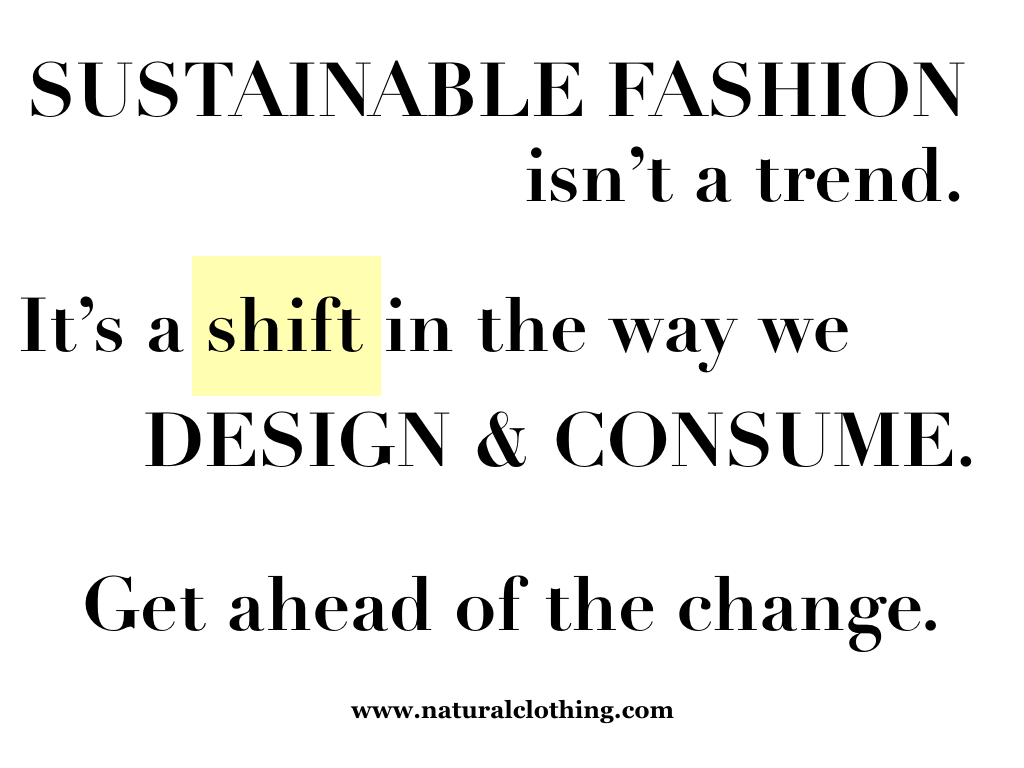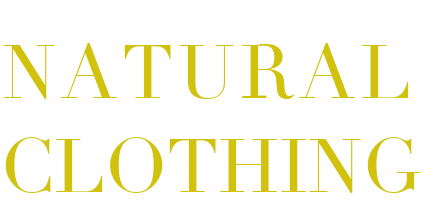Sustainable fashion isn’t a trend, it’s a shift in the way we design and consume. But in order to catalyze and sustain the shift, we need to approach the fashion industry from both sides: the creators and the consumers. From designers and producers we need to see sustainable materials used and sustainable methods employed. From consumers we need to see consumption slowed, clothing cared for, and higher standards demanded. Thus, sustainable fashion must be approached through both design and habits.
why do we need to change our clothes?
The clothing industry now outpaces itself. With the rise of fast fashion, the clothing industry is churning out clothing and accessories at a haphazard rate. In order to keep up this pace, the apparel industry has turned to the oil industry. Fossil fuels are used to create synthetic textiles as well as for fuel in manufacturing and chemicals used in processing and finishing treatments.
Unfortunately, the trend right now is buying more product and more often. Retailers spit out 52 fashion seasons a year – a significant increase from the Spring/Summer and Fall/Winter cycle. Trend setting media encourages buyers to pick up a new outfit just for one event, and at such low prices, the habit is enticing. The fabrics and construction used to make these pieces are not made to last, nor are they intended to.
What’s more, is that it isn’t just fast fashion relying on synthetic textiles. Brands at all price points use synthetics such as polyester, polyamide, nylon, and acrylic. High end labels line their jackets with nylon and sell polyester dresses at luxury prices. They have better alternatives to these plastic fabrics. They’re simply not using them. The alternative is natural fiber fabrics.
Natural clothing will facilitate the shift to sustainable fashion. Clothing made with natural fibers have a longer product lifespan, are easier to care for and clean, and are biodegradable. Natural fibers simplify sustainable design and they simplify sustainable habits.
the apparel industry in numbers
The apparel industry is responsible for 10% of global carbon emissions¹.
Currently, the apparel industry is a $3 trillion global industry.² The United States’s share of the market accounts for almost a full third of the global total. This should be no surprise. Fast fashion providers have split what was a two season per year market (Fall/Winter and Spring/Summer) into 52 micro seasons. That means designs are drawn up, produced, and shipped out weekly. Where is all of that fast fashion going?
On average, an American throws away 102 lbs of clothing and textiles every year.³ At this rate, America alone is projected to throw away over 33 billion pounds of clothing and textiles over the course of this year alone.
Not only are these textiles filling landfills and contributing to carbon emissions, but the manufacturing and maintenance of synthetic textiles is a significant source of water and air pollution as well. These textiles contribute to the number of toxins we are exposed to every day as individuals.
It’s time we start understanding fabrics. We need to start paying as close attention to what we put on our bodies as we do to what we put in them.
the benefits of natural clothing & sustainable fashion
The benefits of natural clothing are far reaching and long lasting. Natural fabrics are significantly easier on the environment. From processing to biodegrading, found fibers use much less energy, create fewer byproducts, and leave much less behind than their man-made alternatives.
Natural clothing is also much kinder to our skin. Those with allergies, sensitive skin, or little ones already know that natural clothing is much less likely to provoke skin irritations. Further, natural fabrics are much less likely to attract and harbor odor causing bacteria.
Natural clothing also has one up on synthetic fabrics in terms of longevity. Natural fibers hold quality longer, at least as long as an expected lifespan of an article of clothing, yet still biodegrade. Synthetic fabrics on the other hand, have a higher tendency to pill and loose quality in their appearance faster. Pilling is when those little balls of fiber start to appear on a fabric after some wear, usually starting in areas of high contact, like armpits or near a pocket.
Synthetic fabrics also last an incredibly long time in a landfill. For example, a cotton sock biodegrades in about 3 months in a landfill. A nylon sock on the other hand, breaks down in about 30 to 40 years. Many of these synthetic clothing pieces can even last 200 years and more in a landfill, emitting harmful pollutants as they slowly break down.
what is sustainable fashion?
In short, sustainable fashion is the opposite of fast fashion. Unfortunately, there is not an industry-wide recognized definition of ‘sustainable fashion’. As the term becomes increasingly popular, we see more and more variation in what is considered sustainable. According to us, sustainable fashion sources materials from renewable and natural sources. The materials are then processed responsibly using closed loop methods – recovering and reusing any chemicals and product used. Then, once the item has reached its end of life, it is biodegradable, reusable, and/or recyclable. It is crucial that participants in the sustainable fashion industry account for every stage of the clothing’s lifespan: sourcing and production, use and longevity, and disposal. It’s also important to note that sustainable fashion requires both producers and consumers to ditch this idea of disposable clothing and slow production and consumption rates.

¹https://unfccc.int/news/un-helps-fashion-industry-shift-to-low-carbon
²https://fashionunited.com/global-fashion-industry-statistics/
³Advancing Sustainable Materials Management: Facts and Figures Report. (2016, November). Retrieved March 18, 2018, from https://www.epa.gov/smm/advancing-sustainable-materials-management-facts-and-figures-report






